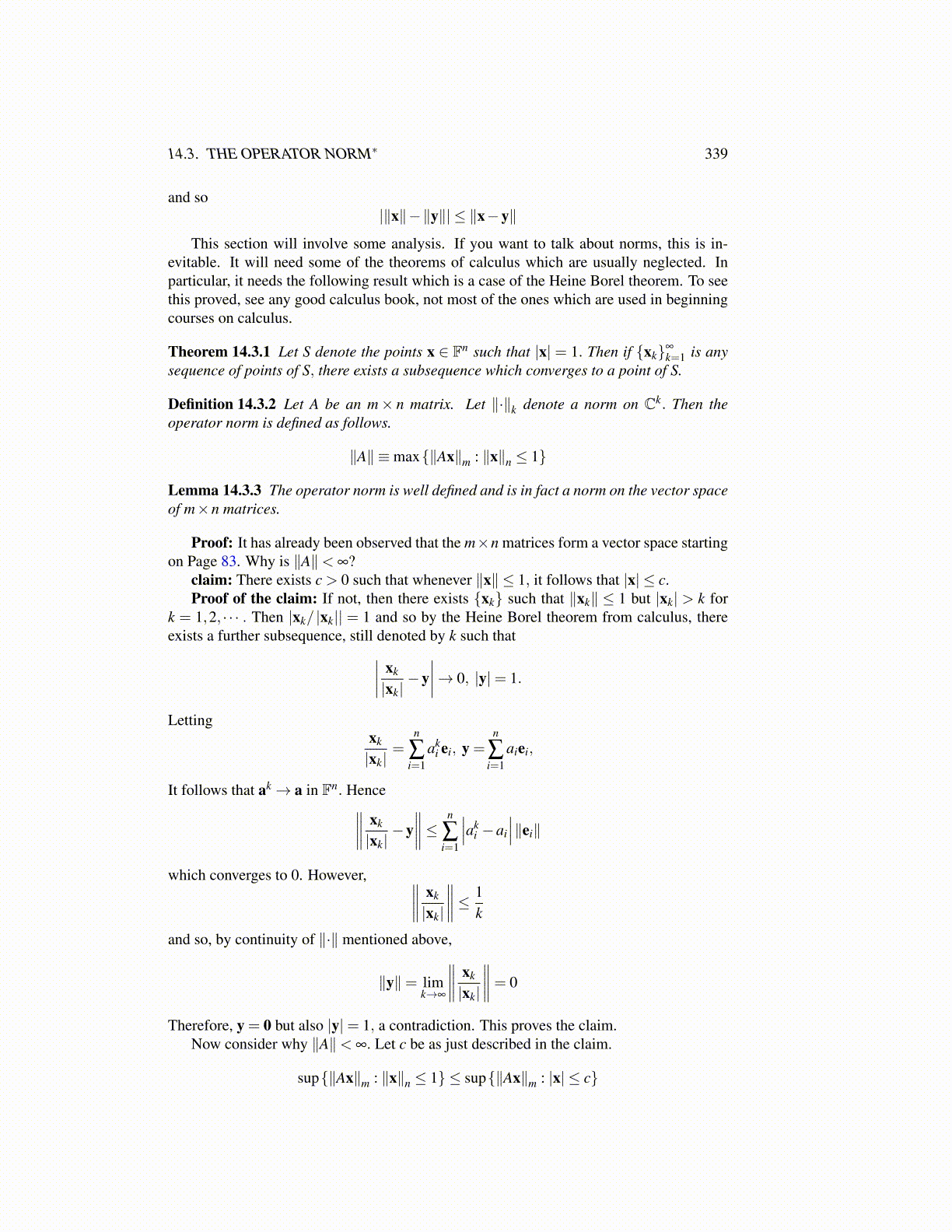
14.3. THE OPERATOR NORM∗ 339
and so|∥x∥−∥y∥| ≤ ∥x−y∥
This section will involve some analysis. If you want to talk about norms, this is in-evitable. It will need some of the theorems of calculus which are usually neglected. Inparticular, it needs the following result which is a case of the Heine Borel theorem. To seethis proved, see any good calculus book, not most of the ones which are used in beginningcourses on calculus.
Theorem 14.3.1 Let S denote the points x ∈ Fn such that |x| = 1. Then if {xk}∞
k=1 is anysequence of points of S, there exists a subsequence which converges to a point of S.
Definition 14.3.2 Let A be an m× n matrix. Let ∥·∥k denote a norm on Ck. Then theoperator norm is defined as follows.
∥A∥ ≡max{∥Ax∥m : ∥x∥n ≤ 1}
Lemma 14.3.3 The operator norm is well defined and is in fact a norm on the vector spaceof m×n matrices.
Proof: It has already been observed that the m×n matrices form a vector space startingon Page 83. Why is ∥A∥< ∞?
claim: There exists c > 0 such that whenever ∥x∥ ≤ 1, it follows that |x| ≤ c.Proof of the claim: If not, then there exists {xk} such that ∥xk∥ ≤ 1 but |xk| > k for
k = 1,2, · · · . Then |xk/ |xk|| = 1 and so by the Heine Borel theorem from calculus, thereexists a further subsequence, still denoted by k such that∣∣∣∣ xk
|xk|−y∣∣∣∣→ 0, |y|= 1.
Lettingxk
|xk|=
n
∑i=1
aki ei, y =
n
∑i=1
aiei,
It follows that ak→ a in Fn. Hence∥∥∥∥ xk
|xk|−y∥∥∥∥≤ n
∑i=1
∣∣∣aki −ai
∣∣∣∥ei∥
which converges to 0. However, ∥∥∥∥ xk
|xk|
∥∥∥∥≤ 1k
and so, by continuity of ∥·∥ mentioned above,
∥y∥= limk→∞
∥∥∥∥ xk
|xk|
∥∥∥∥= 0
Therefore, y = 0 but also |y|= 1, a contradiction. This proves the claim.Now consider why ∥A∥< ∞. Let c be as just described in the claim.
sup{∥Ax∥m : ∥x∥n ≤ 1} ≤ sup{∥Ax∥m : |x| ≤ c}